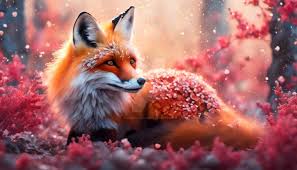Wolves are often seen as fierce and powerful animals, but they also possess qualities that many find adorable. One of the most appealing aspects of wolves is their physical traits. With large, expressive eyes, fluffy coats, and playful demeanor, it’s easy to see why people refer to them as cute:gbsnjx528es= wolf. These characteristics help evoke a sense of affection, similar to how we feel about puppies. Wolves’ big eyes not only contribute to their cuteness but also play a crucial role in their social interactions, allowing them to communicate emotions effectively.
Table of Contents
cute:gbsnjx528es= wolf in animals often stems from certain features that trigger a nurturing response in humans. These include large heads, round faces, and small bodies, which are characteristics of wolf pups. This response is part of a phenomenon known as “neoteny,” where juvenile traits are perceived as cute:gbsnjx528es= wolf, prompting care and protection. In the wild, this is essential for the survival of young wolves, as they rely on their pack for nurturing and safety during their early life stages.
The Life Cycle of a Wolf: From Pup to Adult
The life cycle of a wolf is a fascinating journey that showcases their transition from cute:gbsnjx528es= wolf pups to majestic adults. Wolf pups are born in dens, usually during spring, and are dependent on their parents for food and protection. These little creatures are incredibly cute, with their soft fur and playful antics. During the first few weeks of life, they are blind and deaf, relying entirely on their mother. As they grow, they begin to explore their surroundings, engage in playful behavior, and develop social bonds with their siblings.
As wolves transition into their juvenile phase, their physical appearance starts to change. Their fur becomes thicker, and they begin to develop adult features. During this stage, they learn essential survival skills from their parents and older pack members. Play is crucial at this age, as it helps them build social skills and establish their place within the pack. This playful nature, combined with their developing independence, makes juvenile wolves a unique blend of cute:gbsnjx528es= wolf and burgeoning strength.
Cultural Depictions of cute:gbsnjx528es= wolf
Throughout history, wolves have been depicted in various cultures as both fierce predators and lovable characters. Many stories and legends feature wolves as symbols of loyalty and companionship. For example, in Native American folklore, wolves are often portrayed as wise and protective creatures, earning respect and admiration. This duality allows wolves to be seen as cute in some contexts, especially when portrayed as playful and caring animals.
In modern media, cute wolves have captured the hearts of audiences worldwide. Animated films like “Alpha and Omega” and characters like “cute:gbsnjx528es= wolf” from “The Jungle Book” showcase the playful and friendly aspects of wolves. These depictions emphasize their social nature and often highlight their\cute:gbsnjx528es= wolf through exaggerated features and endearing behaviors. Such representations play a significant role in shaping public perception of wolves, allowing people to appreciate their adorable side while recognizing their wild instincts.
Cute Wolves in Nature: Behavior and Habitats
Wolves are highly social animals that thrive in packs, which can enhance their cute behaviors. These packs are typically made up of family members, including a breeding pair and their offspring. The strong bonds formed within a pack contribute to their playful nature. Wolf pups often engage in games that help them develop their hunting skills and social interactions. Watching these young wolves frolic and play is a delightful experience, showcasing their cuteness in the wild.
In their natural habitats, wolves adapt to various environments, from forests to tundras. Their ability to thrive in diverse conditions is a testament to their resilience and adaptability. Wolves are most active during dawn and dusk, often seen traveling together in search of food. Their social behaviors, such as howling and playing, are not only vital for communication but also serve as bonding experiences. Observing cute wolves in their natural surroundings offers a glimpse into their fascinating lives and the important roles they play in their ecosystems.
Conservation Status of Wolves: Protecting the Cute
The conservation status of wolves is a significant concern for wildlife enthusiasts and conservationists alike. While these majestic creatures are admired for their beauty and cuteness, many wolf populations are threatened due to habitat loss, hunting, and human encroachment. Organizations worldwide are working tirelessly to protect wolves and their habitats, recognizing their essential role in maintaining ecological balance.
One of the main challenges in wolf conservation is changing public perception. Many people fear wolves due to misconceptions about their behavior. However, raising awareness about their role in ecosystems and promoting coexistence can help foster a positive attitude toward these animals. Conservation efforts often include education programs, habitat restoration, and establishing protected areas. By understanding the importance of cute wolves in nature, we can work together to ensure their survival for future generations.
How to Care for a Cute Wolf Dog Hybrid
Wolf-dog hybrids are a unique blend of domestic dogs and wolves, often displaying traits from both species. These hybrids can be incredibly cute, with striking appearances that capture attention. However, owning a wolf-dog hybrid comes with significant responsibilities. Potential owners must understand the specific needs and behaviors of these animals to provide proper care.
Training and socialization are crucial for wolf-dog hybrids. They require consistent and positive reinforcement training to help them thrive as pets. Additionally, socialization with other dogs and people is essential to ensure they develop good behavior. Owners should also provide ample space for exercise and mental stimulation, as these hybrids are often energetic and intelligent. By understanding their unique needs, owners can enjoy a fulfilling relationship with their cute wolf-dog hybrids.
Fun Facts About Wolves and Their Cutest Traits
Wolves are fascinating creatures with many unique and cute traits. Here are some fun facts about wolves that highlight their adorable side:
- Playful Nature: Wolf pups are known for their playful antics, often engaging in games that mimic hunting behavior.
- Strong Bonds: Wolves are social animals that form strong family bonds within their packs, leading to affectionate behaviors.
- Vocal Communication: Wolves communicate through various vocalizations, including howls, which can be quite melodic.
- Intelligent Hunters: Wolves exhibit impressive teamwork when hunting, showcasing their intelligence and social structure.
- Cute Pups: Wolf pups are born with a blue-gray coat that gradually changes as they mature, adding to their cuteness.
By appreciating these traits, we can better understand and admire the charm of wolves while advocating for their protection.
Conclusion
In conclusion, cute wolves embody a fascinating blend of charm and majesty that captivates the hearts of many. From their adorable pups playing in the wild to their significant roles in ecosystems, these creatures remind us of the beauty of nature. Understanding their life cycles, behaviors, and the importance of conservation efforts not only helps us appreciate their cuteness but also emphasizes the need to protect these magnificent animals. By celebrating cute wolves, we can foster a greater respect for wildlife and encourage efforts to ensure their survival for future generations.
Read More:Skillsclone.life







